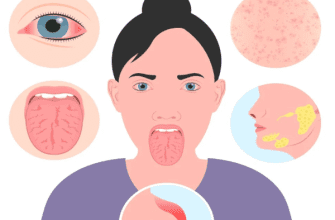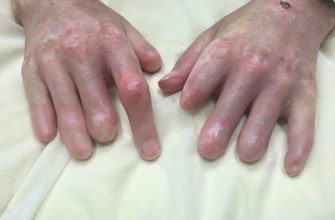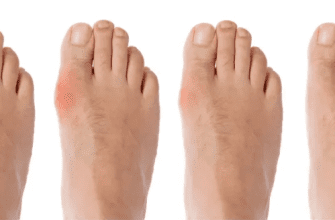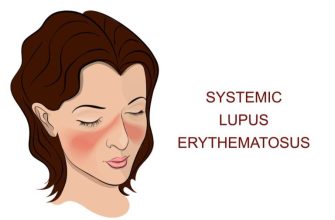What It Is
Acute Rheumatic Fever (ARF) is an inflammatory disease that can develop as a complication of an untreated or inadequately treated infection with Group A Streptococcus bacteria—the bacteria that causes strep throat and, less commonly, scarlet fever.
It is an autoimmune reaction, meaning the body’s immune system, which is fighting the strep bacteria, mistakenly attacks its own healthy tissues, particularly in the heart, joints, skin, and brain.
Causes
The cause is specifically a Group A Streptococcal (GAS) pharyngeal (throat) infection.
- The Mechanism: The proteins on the surface of the strep bacteria resemble proteins found in the body’s own tissues (e.g., in heart valves, joints). The immune system makes antibodies to fight the strep bacteria, but these antibodies then cross-react with the similar-looking human tissues, causing inflammation and damage.
- It is not caused by: Viral sore throats, strep infections on the skin (impetigo), or other bacteria.
Symptoms
Symptoms of ARF typically appear 2 to 4 weeks after a strep throat infection has seemingly resolved. The presentation can vary widely, but key symptoms are remembered by the mnemonic “JONES”:
- J – Joint Involvement (Polyarthritis): The most common symptom. It causes migratory arthritis, meaning pain and swelling that moves from one large joint (like knees, ankles, elbows, wrists) to another.
- O – Carditis (Heart Inflammation): The most serious symptom. It can affect the heart valves (most commonly the mitral valve), heart muscle, or the sac surrounding the heart. This can lead to shortness of breath, heart palpitations, or a new heart murmur.
- N – Nodules (Subcutaneous): Small, painless, hard bumps under the skin, usually over bony surfaces.
- E – Erythema Marginatum: A non-itchy, pink rash with a wavy, snake-like or lacy border. It is rare and transient.
- S – Sydenham Chorea (St. Vitus’ Dance): A neurological disorder characterized by rapid, jerky, involuntary movements of the face, hands, and feet. It often appears late, sometimes months after the infection.
Other common symptoms include fever and general malaise.
Diagnosis
There is no single test for ARF. Diagnosis is based on the Revised Jones Criteria, which combines evidence of a recent strep infection with clinical signs.
- Evidence of Preceding Strep Infection:
- Positive throat culture or rapid strep test.
- Elevated or rising blood tests for anti-strep antibodies (ASO titer or Anti-DNAse B).
- Clinical Criteria (The JONES mnemonic): The presence of either 2 major symptoms, or 1 major and 2 minor symptoms (which include fever, joint pain without swelling, high ESR/CRP inflammation markers, and a prolonged PR interval on an ECG) is required for diagnosis.
Additional tests include an echocardiogram (ultrasound of the heart) to check for valve damage, even if no murmur is heard, and blood tests to measure inflammation.
Treatment
The goals are to eliminate any remaining strep bacteria, control inflammation, and manage symptoms.
- Antibiotics: A full course of antibiotics (usually penicillin) is given to eradicate any lingering strep bacteria. This is followed by long-term antibiotic prophylaxis to prevent recurrence.
- Anti-inflammatory Medications:
- High-dose Aspirin or NSAIDs are used to treat joint pain and fever.
- Corticosteroids (e.g., Prednisone) are used for severe carditis (heart inflammation).
- Bed Rest: Recommended, especially during the acute phase with carditis, to reduce strain on the heart.
- Symptom Control: Medications like valproic acid or carbamazepine may be used to manage severe chorea.
Prevention
Prevention is the cornerstone of managing ARF.
- Primary Prevention: Promptly and completely treating diagnosed strep throat with a full course of antibiotics (e.g., penicillin or amoxicillin). This is the most effective way to prevent ARF.
- Secondary Prevention: For individuals who have already had an episode of ARF, long-term, continuous antibiotic prophylaxis (usually monthly penicillin injections or daily oral pills) is essential to prevent recurrent attacks and further heart damage. This often continues into adulthood.
Prognosis
The prognosis heavily depends on whether the heart was affected.
- Joints and Brain: Joint arthritis and chorea typically resolve without permanent damage.
- Heart: This is the main cause of long-term morbidity. Inflammation can cause scarring of the heart valves, leading to Rheumatic Heart Disease (RHD). RHD can cause valve stenosis (narrowing) or regurgitation (leaking), which may require medication and, in severe cases, heart valve repair or replacement surgery later in life. The severity is highly variable.
How to Know When to See a Doctor
You should see a doctor immediately if:
- Your or your child’s sore throat is severe, persistent, or accompanied by a fever, swollen lymph nodes, or white patches on the tonsils (potential signs of strep throat).
- After a sore throat (even a mild one), you or your child develops:
- Painful, swollen joints, especially if the pain migrates from one joint to another.
- Unexplained shortness of breath, chest pain, or heart palpitations.
- You notice sudden, jerky, involuntary movements (chorea) in a child.
- An unexplained pink rash appears.
Do not wait to see if these symptoms go away on their own. A simple test for strep throat and timely treatment with antibiotics can prevent this serious complication. If joint or heart symptoms appear after a sore throat, it is a medical emergency that requires immediate evaluation.






